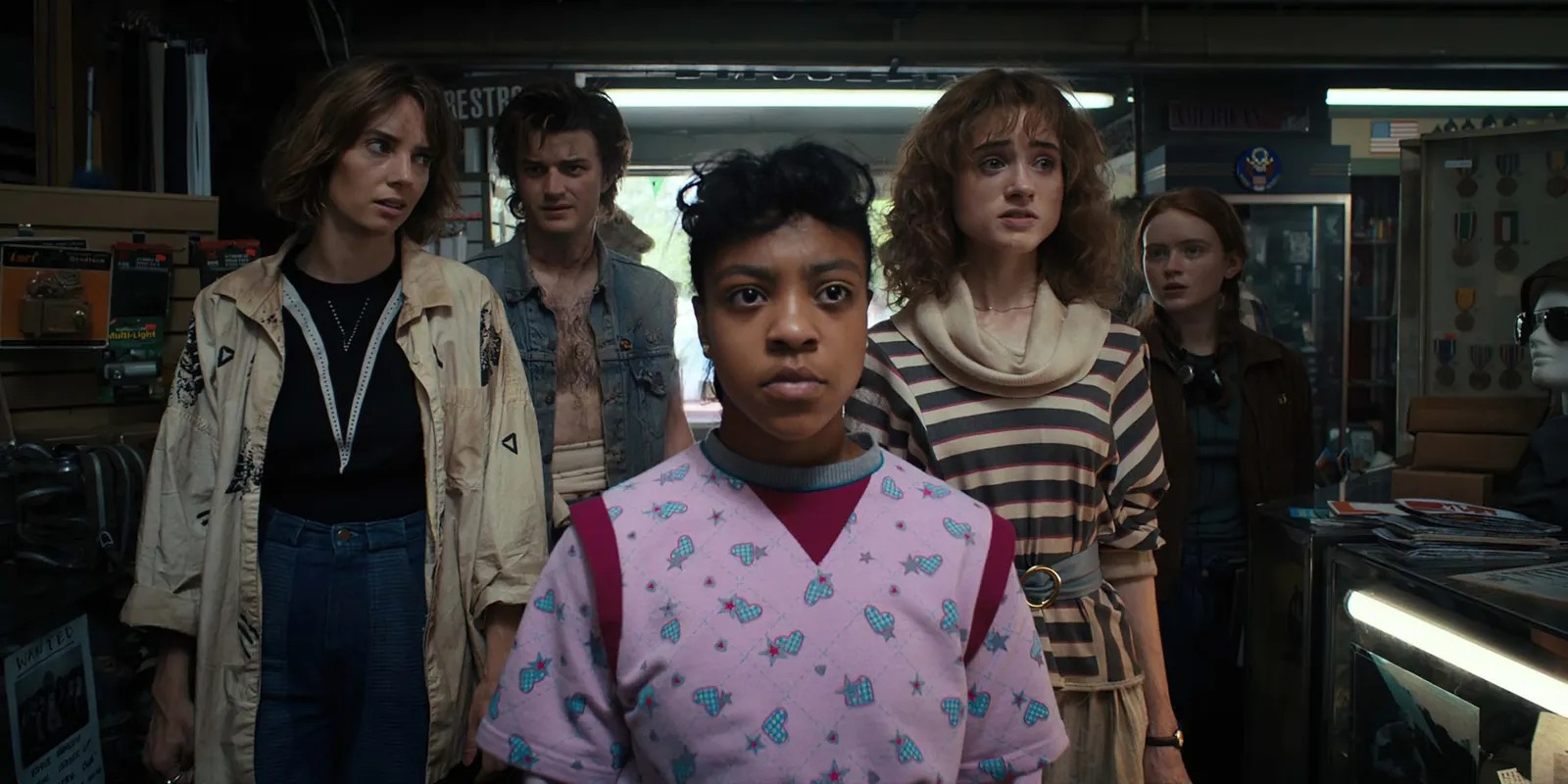Stranger Things

Created by the Duffer Brothers, “Stranger Things” burst onto the television scene in 2016, captivating audiences with its blend of supernatural horror, 1980s nostalgia, and heartfelt storytelling. Set in the fictional town of Hawkins, Indiana, during the 1980s, the series unfolds as a thrilling mystery centered around the disappearance of a young boy, Will Byers (played by Noah Schnapp), and the subsequent discovery of a mysterious girl with supernatural abilities.
At its core, “Stranger Things” is a coming-of-age story that explores the bonds of friendship among a group of misfit kids: Mike Wheeler (Finn Wolfhard), Lucas Sinclair (Caleb McLaughlin), Dustin Henderson (Gaten Matarazzo), and Eleven (Millie Bobby Brown). Their quest to find Will leads them into a parallel dimension known as the Upside Down, where they encounter terrifying creatures and unravel a government conspiracy that threatens their town and loved ones.

The series pays homage to 1980s pop culture and sci-fi classics, drawing inspiration from films like “E.T.,” “The Goonies,” and “Close Encounters of the Third Kind.” From its iconic title sequence to its synth-heavy soundtrack composed by Kyle Dixon and Michael Stein, “Stranger Things” immerses viewers in a nostalgic journey filled with retro fashion, arcade games, and references that evoke a sense of nostalgia for those who grew up during that era.
Central to the show’s appeal are its richly developed characters, each with their own struggles and growth arcs. Chief among them is Eleven, a young girl with psychokinetic abilities who escapes from a secretive government lab. Millie Bobby Brown’s portrayal of Eleven is a standout, capturing both the vulnerability of a child experimenting with newfound emotions and the fierceness of a powerful heroine determined to protect her friends.

The adults in “Stranger Things” also play pivotal roles, from Joyce Byers (Winona Ryder), Will’s determined mother who refuses to give up hope, to Police Chief Jim Hopper (David Harbour), whose gruff exterior hides a compassionate heart. These characters add layers of emotional depth and complexity to the narrative, highlighting themes of parental love, sacrifice, and the resilience of the human spirit in the face of supernatural threats.
Thematically, “Stranger Things” explores the blurred boundaries between reality and the unknown, as well as the consequences of scientific experimentation and government secrecy. The Upside Down serves as a metaphorical realm where fears and nightmares manifest, reflecting the characters’ inner struggles and fears. This dualistic world-building enhances the show’s suspense and intrigue, keeping audiences on the edge of their seats with each twist and revelation.

Visually, “Stranger Things” employs atmospheric cinematography and visual effects to create an eerie yet compelling aesthetic. The juxtaposition of the mundane suburban setting with the otherworldly horrors of the Upside Down reinforces the series’ supernatural elements while grounding the narrative in a recognizable, relatable backdrop.

In conclusion, “Stranger Things” has captivated audiences worldwide with its blend of supernatural thrills, nostalgic homage, and heartfelt storytelling. Through its engaging characters, homage to 1980s pop culture, and exploration of themes like friendship and courage, the series has left an indelible mark on popular culture. As it continues to evolve across multiple seasons, “Stranger Things” remains a testament to the enduring power of storytelling and the universal appeal of confronting the unknown.











